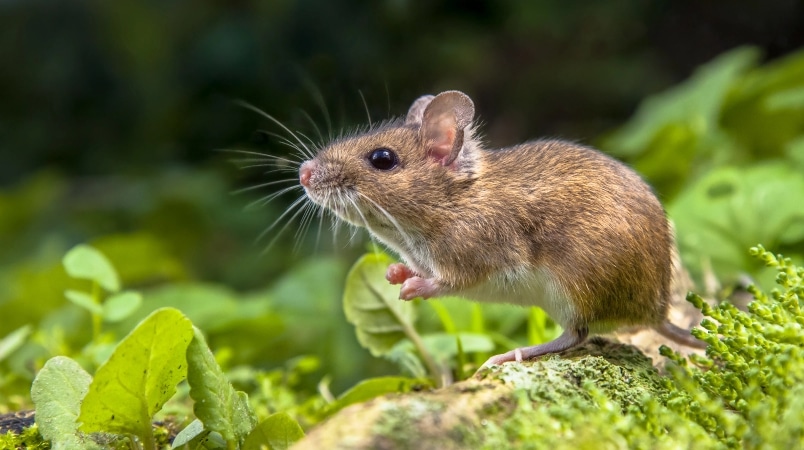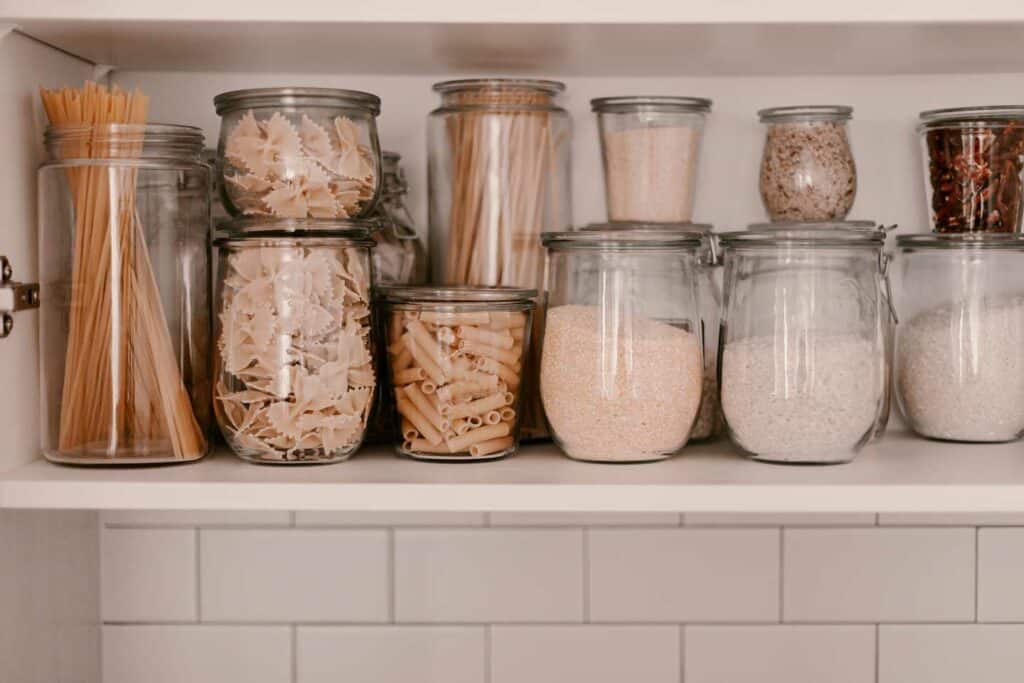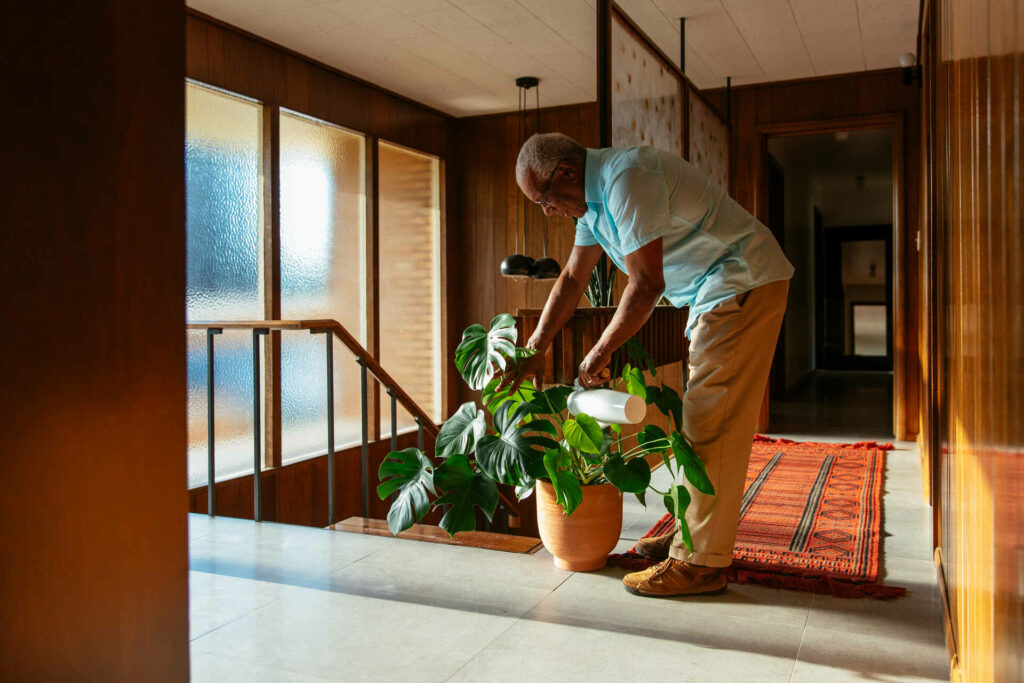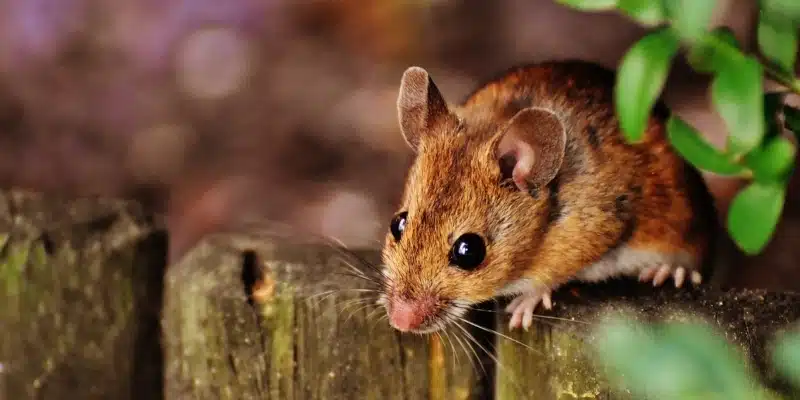Mouse droppings are a common indication of a rodent infestation in your home. Identifying mouse poop is crucial for assessing the severity of the problem and taking appropriate action. Mouse droppings are typically small, dark, and pill-shaped, resembling grains of rice.
In this comprehensive guide, we’ll delve into the characteristics of mouse poop, helping you distinguish it from rat droppings and determine the freshness of the droppings. We’ll also discuss the health risks associated with mouse droppings and provide effective cleaning and disposal methods, along with preventative measures to avoid future infestations.
Characteristics Of Mouse Droppings
Mouse droppings exhibit distinct characteristics that help in identifying them and assessing the severity of a mouse infestation. Here are the key features of mouse poop:
Appearance and Size
Mouse droppings are small, dark, and granular pellets, typically measuring between an eighth to a quarter of an inch in length. They are often compared to dark grains of rice or seeds due to their similar size and shape.
Color and Texture
Fresh mouse droppings are usually black or dark brown in color. Over time, the color of the droppings fades from black to brown and eventually to grey. The texture of the droppings also changes, with fresh droppings being shinier and older ones becoming crumbly.
Quantity and Frequency
Mice are prolific defecators, with a single mouse capable of producing between 50 to 75 droppings per day. The presence of numerous droppings is a strong indication of an active mouse infestation.
| Characteristic | Description |
|---|---|
| Size | 1/8 to 1/4 inch long, 1/8 inch in diameter |
| Shape | Granular, pellet-shaped, pointed at the ends |
| Color (Fresh) | Black or dark brown |
| Color (Aged) | Brown to grey |
| Texture (Fresh) | Shiny |
| Texture (Aged) | Crumbly |
| Quantity per Day | 50 to 75 droppings |
It is crucial to accurately identify mouse droppings to determine the presence and extent of a mouse infestation in your home. By understanding these characteristics, you can take appropriate measures to address the issue and prevent potential health risks associated with mouse droppings.
Common Locations To Find Mouse Droppings
Mice tend to leave droppings along their travel paths and in places where they find food. Common areas for finding mouse droppings include kitchens, cabinets, pantries, closet spaces, attics, basements, garages, and food storage areas. High-risk areas for discovering mouse droppings include:
- Kitchen cabinets and pantries
- Utility closets and bathroom cabinets
- Attics and crawl spaces
- Areas around appliances, water heaters, air vents, and exposed pipes
- Holes in walls and wall voids
- Behind and under cabinets
- Along baseboards
Mouse droppings can often be found in cabinets, pantries, utility closets, vents, attics, and crawl spaces. Mice feces are commonly discovered along their travel paths, called runways, and near food sources. It is crucial to thoroughly inspect these areas when searching for signs of a mouse infestation.
| Location | Specific Areas |
|---|---|
| Kitchen | Cabinets, pantries, behind appliances, holes in walls |
| Bathroom | Cabinets, utility closets, exposed pipes |
| Storage Areas | Attics, crawl spaces, garages, food storage areas |
| Utility Spaces | Around water heaters, air vents, wall voids |
| Travel Paths (Runways) | Along baseboards, near food sources |
Distinguishing Between Mouse and Rat Droppings
Differentiating between mouse and rat droppings is essential for accurately identifying the type of rodent infestation in your home. While both droppings may appear similar, there are distinct characteristics that set them apart.
Size and Shape
One of the primary differences between mouse and rat droppings is their size and shape:
- Mouse Droppings:
- Smaller in size, typically comparable to a grain of rice
- Measure approximately 1/8 to 1/4 inch in length
- Rat Droppings
- Larger than mouse droppings, resembling a small bell pepper seed
- Brown Rat (Norway Rat) Feces:
- 3/4 inch long, large, rectangular-shaped with blunt ends
- Black Rat (Roof Rat) Feces:
- Smaller than brown rat feces, usually 1/2 inch long
- Large, curved with a sausage shape and pointed ends
| Rodent | Size | Shape |
|---|---|---|
| Mouse | 1/8 to 1/4 inch long | Small, resembling a grain of rice |
| Brown Rat | 3/4 inch long | Large, rectangular with blunt ends |
| Black Rat | 1/2 inch long | Large, curved with a sausage shape, pointed ends |
Other Distinguishing Factors
In addition to size and shape, consider the following factors when differentiating between mouse and rat droppings:
- Location of Feces
- Rats defecate wherever they find food, which could be in the attic, inside the house, or near food sources
- Distinguishing Norway Rat and Roof Rat Droppings:
- Norway Rat droppings are blunt on both ends and tend to be a bit thicker
- Roof Rat droppings have a pinched end on one side or both, and their bodies are slimmer than Norway Rats
It is crucial to accurately identify the type of rodent infestation to implement the most effective control measures and prevent potential health risks associated with their droppings.
Signs Of Fresh Vs. Old Droppings
Distinguishing between fresh and old mouse droppings is crucial in determining the current status of a mouse infestation in your home. By examining the appearance, texture, and color of the droppings, you can assess whether the infestation is active or if the mice have long since departed.
Characteristics of Fresh Mouse Droppings
Fresh mouse droppings exhibit distinct features that set them apart from older droppings:
- Color: Fresh droppings are typically dark black or dark brown.
- Moisture: The surface of fresh droppings appears wet and moist, with evident moisture.
- Texture: When touched, fresh droppings are soft and will squish if pressure is applied.
Characteristics of Older Mouse Droppings
In contrast, older mouse droppings display the following characteristics:
- Color: Older droppings are more faded in color, ranging from light brownish-grey to off-white.
- Moisture: Older droppings lack moisture and have a dry, dusty appearance.
- Texture: When touched, older droppings are harder and will crumble if pressure is applied.
| Characteristic | Fresh Mouse Droppings | Older Mouse Droppings |
|---|---|---|
| Mouse | Dark black or dark brown | Light brownish-gray to off-white |
| Brown Rat | Wet and moist surface | Dry and dusty |
| Black Rat | Soft, will squish when pressed | Hard, will crumble when pressed |
Determining the Age of Mouse Droppings
While the age of mouse droppings can be difficult to determine based on color alone, the presence or absence of new droppings after a 24-hour period can indicate whether there is a current infestation. Fresh droppings suggest an active infestation, while the absence of new droppings may indicate that the mice have long since departed.
By carefully examining the signs of fresh and old mouse droppings, homeowners can accurately assess the current status of a mouse infestation and take appropriate measures to address the issue.

Health Risks Associated With Mouse Droppings
Mouse droppings pose a significant health concern as they can contain harmful diseases, pathogens, and bacteria that can cause serious illnesses in humans. The major mouse allergen Mus m 1, found in mouse droppings, can trigger allergies, asthma symptoms, and hypersensitivity to IgE, particularly in children, with more than 40% developing persistent and uncontrolled asthma due to exposure.
Some of the severe health issues that can be spread through mouse droppings include:
- Hantavirus Pulmonary Syndrome (HPS)
- Lymphocytic Choriomeningitis (LCMV)
- Salmonellosis
- Rat Bite Fever
- Leptospirosis
Hantavirus Pulmonary Syndrome (HPS)
Hantavirus, a life-threatening disease primarily transmitted by the white-footed deer mouse, is a major concern. The virus can be easily released into the air and inhaled, or transmitted through touching the mouth or nose after handling contaminated materials such as rodent droppings, urine, saliva, or nesting materials.
| Symptoms | Onset | Risk Factors |
|---|---|---|
| Fever, fatigue, muscle pain, headache | Usually 9-33 days after exposure | Contact with infected rodents in households, workplaces, or recreational areas |
| Nausea, vomiting, diarrhea, dizziness | Early stages | Cleaning closed spaces where mice and rats may live, such as sheds, cabins, or barns |
| Difficulty breathing, low blood pressure | Late stages | Inhalation of hantaviruses present in urine, droppings, or nesting materials of infected rodents |
There is no specific treatment, cure, or vaccine for hantavirus disease. Prevention measures include avoiding contact with rodent droppings or urine, rodent-proofing dwellings, and taking precautions when cleaning up rodent-infested areas.
Other Diseases
Arenaviruses, Omsk Hemorrhagic Fever, and Gastrointestinal Infections are additional diseases that can be transmitted through mouse droppings. Minimizing rodent contact, cleaning and disinfecting mouse contact areas, and safely disposing of mouse carcasses can help prevent the spread of these diseases.
To avoid illness, it is crucial to prevent mice and other rodents from entering homes, vehicles, or other spaces. If rodent droppings are found, they should be cleaned up carefully using gloves, a face mask, and a bleach solution or disinfectant. For severe infestations or cleanup in air ducts, walls, or other structural areas, a professional should be hired.
Effective Cleaning And Disposal Methods
When dealing with mouse droppings, it is crucial to follow proper cleaning and disposal methods to minimize health risks. Before beginning the clean-up process, gather necessary equipment, including a general-purpose household disinfectant or bleach solution, rubber or plastic gloves, and a breathing mask or respirator.
Preparation and Safety Precautions
- Ventilate the area by opening doors and windows for at least 30 minutes before starting the clean-up.
- Wear protective clothing, such as disposable Tyvek protective clothing, when handling contaminated items.
- Use a HEPA-equipped respirator correctly when handling contaminated items.
- Put on sturdy, nonabsorbent gloves, such as rubber, latex, or vinyl gloves.
Cleaning Process
- Spray urine, droppings, and nesting materials with a commercial disinfectant or a mixture of bleach and water (1 part bleach to 9 parts water) until very wet, and let soak for at least 5 minutes.
- Use paper towels or disposable cleaning rags to pick up the soaked droppings, nests, and/or dead mice, placing them immediately into a sealed plastic bag.
- Mop or sponge the area with a disinfectant after cleaning.
- Machine-wash contaminated clothing, bed sheets, quilts, pillows, cases, or stuffed animals in hot water.
- Place the fabrics and other washables in the dryer and spin them at a high temperature.
- Infected rugs, carpets, and furniture will require the use of professional-grade steam cleaners with shampoo or disinfectant.
Disposal
- Seal the plastic bag containing the waste completely and dispose of it in a covered garbage can that is regularly emptied.
- Dispose of waste in trash bags and disinfect other items or areas that might have been contaminated.
Post-Cleaning
- Wash gloves thoroughly before removing them.
- Wash hands with warm soap and water after removing gloves.
| Do | Don’t |
|---|---|
| Wear protective gear (gloves, mask) | Sweep or vacuum droppings or nesting material |
| Ventilate the area before cleaning | Touch droppings or nests with bare hands |
| Soak droppings with disinfectant | Dispose of waste in uncovered or open garbage cans |
| Use disposable cleaning materials | Neglect to wash hands thoroughly after cleaning |
| Seal waste in plastic bags for disposal | Ignore safety precautions when handling contaminated items |
By following these effective cleaning and disposal methods, you can safely remove mouse droppings and minimize the risk of exposure to harmful diseases and pathogens. Remember to prioritize safety and adhere to proper cleaning practices to ensure a healthy living environment.
Preventative Measures To Avoid Mouse Infestation
To prevent a mouse infestation in your home, it is crucial to take proactive measures that limit their access to food, water, and shelter. By following these preventative steps, you can significantly reduce the likelihood of encountering mouse droppings and the health risks associated with them.

Seal Entry Points
Mice can squeeze through incredibly small openings, so it’s essential to seal any gaps or holes in your home’s exterior. Pay close attention to the following areas:
- Fill small holes with steel wool and caulk
- Use lath screen, lath metal, cement, hardware cloth, or metal sheeting for larger holes
- Install door sweeps on exterior doors and repair damaged screens
- Screen vents and openings to chimneys
Limit Food and Water Sources
Mice are attracted to easily accessible food and water sources. To make your home less appealing to them, take these steps:
- Keep food sealed in thick plastic, metal, or glass containers with tight lids
- Clean up spilled food immediately
- Put away pet food after use
- Eliminate all moisture sites, including leaking pipes and clogged drains
- Keep the house tidy to avoid providing mice with easy food sources and hiding places
Maintain a Clean Environment
A clean and clutter-free home is less attractive to mice. Implement these cleaning practices:
- Regularly inspect areas where droppings may be found and block potential entry points with steel wool and silicone caulk
- Clear clutter around the home’s exterior and garage
- Stack firewood in a storage shed or away from the main house
- Keep lawns manicured to prevent mice from hiding
Use Natural Repellents
Certain scents and plants can help deter mice from entering your home. Consider using:
- Peppermint or clove essential oils
- Spicy hot sauce
- Plants such as marigolds, rosemary, lavender, daffodils, onions, sage, and tomatoes
Inspect Regularly
Regularly inspect your property for signs of mouse activity, such as:
- Gnaw marks
- Scratching or scurrying noises
- Unusual pet behavior
- Mouse tracks or footprints
- Unpleasant odors
If you suspect a large infestation or are unable to effectively clean and seal entry points, consider seeking professional pest control services.
| Preventative Measure | Action Steps |
|---|---|
| Seal Entry Points | Fill small holes, use appropriate materials for larger holes |
| Limit Food and Water | Seal food, clean spills, fix leaks, eliminate moisture |
| Maintain Cleanliness | Clear clutter, inspect regularly, keep lawns manicured |
| Use Natural Repellents | Essential oils, spicy sauces, certain plants |
| Inspect Regularly | Check for gnaw marks, noises, tracks, odors |
By implementing these preventative measures and maintaining a clean, sealed home, you can significantly reduce the risk of a mouse infestation and the health hazards associated with mouse droppings.
Conclusion
In conclusion, identifying mouse poop in your home is a critical step in assessing and addressing a potential rodent infestation. By understanding the characteristics of mouse droppings, distinguishing them from rat droppings, and recognizing the signs of fresh and old droppings, homeowners can take appropriate measures to protect their health and prevent the spread of harmful diseases. Implementing effective cleaning and disposal methods, along with preventative measures such as sealing entry points, limiting food and water sources, maintaining a clean environment, and using natural repellents, can significantly reduce the risk of a mouse infestation and the associated health hazards.
It is crucial for homeowners to remain vigilant and proactive in identifying and addressing mouse infestations. By staying informed about the potential risks and taking the necessary steps to prevent and control mouse infestations, individuals can create a safer and healthier living environment for themselves and their families. If a severe infestation is suspected or if proper cleaning and prevention measures prove challenging, seeking the assistance of professional pest control services is highly recommended.
Frequently asked questions
What are the characteristics of mouse poop?
Mouse feces can be recognized by their small, dark brown or black pellet-like shape. Typically, the droppings of an adult mouse are about a quarter of an inch in length with pointed ends, resembling seeds or tiny dark grains of rice. Initially black in color, these pellets will gradually fade over time.
What could be confused with mouse feces?
Depending on your plan, we have different schedules to suit your needs. Following your initial treatment, your first standard service usually occurs in the next 20-60 days. After that, Aptive schedules recurring services during the year based on the service plan you select.
Why am I seeing more pest activity after my initial service?
The initial treatment is a flushing treatment. While it can reduce activity levels, it also draws pests out so we can target them more effectively at your subsequent treatment.
Is finding mouse droppings indicative of an active mouse infestation?
All treatments are tailored to address your pest problems and chosen based on a number of factors: types of pests, time of year, location, and more. For a complete list of products we use, visit goaptive.com/our-products
How can I distinguish between new and old mouse droppings?
It’s normal for pests to return. That’s why, under our plans, you can contact us after a standard treatment if you’re still seeing pests, and we will re-service your property at no additional cost. We are always here to help.










